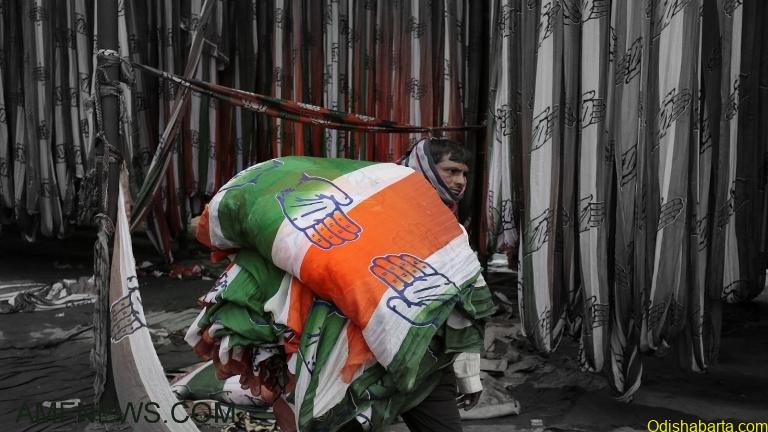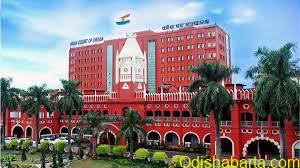The greatest liability for Congress is its historic past

Author: Prasanta Patnaik
Senior Media Personality
Congress allowed its adherents and its own false socialist nostalgia to trump the most crucial political argument for the present and the foreseeable future after the 2004 victory.
For the time being, disregard what Ghulam Nabi Azad says. First, we must address a more fundamental query: Why should we even care about the condition of the Congress party? Does the event even still matter? Why, if so? What does it represent?
The seeds of the Congress party’s decline that were sown during the Nehru era germinated, flourished, and became a full-fledged tree during the Sonia-Rahul era, and are now most likely to topple due to their heavy weight. The current leadership failed to address and left in limbo the causes of the Congress party’s downfall that emerged during the Indira era. New issues were created by the way the Congress administration and party operated, hastening the organization’s decline. The Gandhi family’s dual control of the Manmohan Singh administration and the Congress party was carefully calibrated and initially successful, but it encountered difficulties in the second term.
The management of the alliance partners and the distant control of the government led to tensions that grew into a significant political crisis and a reaction in the 2014 hustings. With little connection to party officials at ground zero, the high command mentality that previously decided party matters at the national and state levels was extended to local levels. Another important aspect is the Congress’s lack of a strong leader.
The Indian National Congress has a long and illustrious political history, dating back to its involvement in the country’s independence movement under Mahatma Gandhi, with Jawaharlal Nehru, Maulana Abul Kalam Azad, Subhas Chandra Bose, and Sarojini Naidu serving as the Congress party’s leading figures.
Despite having few members in the Lok Sabha at the moment, the Congress is in complete power in 2 states and having alliance in few other states. Rahul Gandhi, Sonia Gandhi, Priyanka Gandhi-Vadra, Shashi Tharoor, Kamal Nath, Ashok Gehlot, Anand Sharma, and Mallikarjun Kharge are some of the party’s current major figures.
With a long-term fall in many individual seats, Congress has gone from winning 82% of the seats it fought in 1984 to losing 88% in 2019. One of the likely causes is the rise of regional parties.
India began its “grand experiment” in the winter of 1951 while a sceptic world watched on. The first general election held in the young nation saw more than 10 crore Indians cast their votes.
They selected Nityanand Kanungo, a Union minister and steadfast member of the Congress, to represent them in Kendrapara, Odisha. It was the first—and, as of yet, the last—time that Kendrapara voters chose a Congress candidate for the Lok Sabha.
After Rajiv Gandhi’s 400+ seat victory the year before, the Congress would go on to similarly disappear in many more seats throughout the years, and the tendency has been accelerated since 1985.
Experts cited the growth of regional parties as a crucial role, but they did not single out any one cause for this long-term or “secular” drop.
The Congress had a strike rate of above 50% from 1962 to 1984, according to data provided by the Trivedi Centre for Political Data (TCPD) at Ashoka University. This refers to the proportion of seats the Congress won out of all those it contested. The one exception occurred in 1977,
Following the end of the Emergency, when it received 31% of the vote and toppled Indira Gandhi’s administration.
The party won 404 of the 491 seats it ran for at its height in 1984. (82 per cent). However, the Congress has never since been able to strike at 50% of the time.
39 percent was the amount in 1989, and 48 percent in 1991 brought it even closer to the midpoint. From 1996 to 2004, the party won, on average, only about a third of the seats it ran for (29 per cent). When the Congress joined a coalition to establish a government in 2004, it won 35% of the seats up for election. Its strike rate increased to 47% by 2009.
However, the Congress’ strike percentage dropped to 9% in 2014 when the Bharatiya Janata Party (BJP) and Prime Minister Narendra Modi won the election. It lost 420 of the 464 seats it ran for (91 per cent). The party lost in the 2019 Lok Sabha elections.
The general election of 2014 gave the Congress an electoral blow that made it unable to move on. It also produced a leader in Narendra Modi who had a charismatic personality akin to Indira Gandhi. This led to a tectonic shift in Delhi’s political climate from the Congress’s centrist ideology to the right-wing brand of the Bharatiya Janata Party (BJP), which unveiled a new political platform promising to usher in a new India free of the Congress.
The analysis of election results reveals that the Congress started losing its hold in an increasing number of constituencies long before the so-called “Modi wave” occurred, despite the fact that Modi’s rise to the national political fore has been cited as a contributing reason in the party’s decline.
Losses over History: Indian National Congress
For instance, the Congress has never won the Arambagh Lok Sabha seat in West Bengal, which was created in 1967 during the first election under Indira Gandhi, in which the party’s total was reduced by 78 seats. With the exception of a brief Janata Party period in 1977, the seat continued to serve as a stronghold for the Communist Party of India (Marxist) from 1971 till 2009. But the Trinamool Congress took Arambagh away from the CPI in 2014 and in 2019. (M).
In 1957, the Praja Socialist Party (PSP) defeated the Congress in the Odisha district of Kendrapara. Since 1998, the Biju Janata Dal (BJD) has held the position.
Bolpur, another West Bengal district, and Purulia and Jalpaiguri last chose a Congress candidate in 1967 and 1971, respectively.
Except during the state’s first general election in 1977, when the party’s candidate was elected without a challenge, the Congress has never won Sikkim’s lone Lok Sabha seat.
The party has failed to take the Hyderabad constituency in the current state of Telangana since 1984. This seat was won by Independent Sultan Salahuddin Owaisi in 1984 and held by him till 1999. Sultan Salahuddin Owaisi was the president of the All India Majlis-e-Ittehadul Muslimeen (AIMIM) at the time. Since 2004 the position has been held by his son, Asaduddin Owaisi.
Since 1985, the Congress has continually lost a sizable portion of these 61 seats. Since the 1984 general election, it has not won 14 of the 18 seats in Uttar Pradesh that it has been losing since 1999.
Additionally, the party hasn’t held four Lok Sabha seats in Madhya Pradesh since 1984. But in Madhya Pradesh, the seats were won by the BJP from the start, in contrast to Uttar Pradesh, where these old Congress districts had been taken over by local parties like the Bahujan Samaj Party (BSP) and the Samajwadi Party (SP), and are now held by the BJP.
In addition to these, Sitapur (UP), Fatehpur (UP), Bhavnagar (Gujarat), and Bangalore South (Karnataka) were the Congress’s last victories in 1989. Six of the 14 seats it won in 1991 were in Madhya Pradesh, giving it a total of 14 seats.
The party lost control of Tripura in 1991, and since then, it has never won either of the two seats in the state, Tripura East or Tripura West.
The party also lost control of Odisha in the middle of the 1990s. In 1995 and 1996, respectively, it won Cuttack, Puri, Keonjhar, Kanker, Bolangir, and Bhadrak.
One of Himachal Pradesh’s four Lok Sabha seats, Hamirpur, was last won by the Congress in 1996. In 1998, 1999, and 2004, BJP candidate Suresh Chandel won three consecutive elections to this seat. Son of the former chief minister of Himachal Pradesh, Prem Kumar Dhumal, Anurag Thakur of the BJP has held the position since 2009.
The following seven seats, where the party last won in 1998: Churu in Rajasthan, Tura in Meghalaya, Rajnandgaon and Raigarh in Chhattisgarh (then Madhya Pradesh), Jajpur and Jagatsinghpur in Odisha, and Aurangabad in Maharashtra. The party has also been unable to resurrect itself in any of these seats.
Will Congress Survive?
The party currently lacks a strong leader and a functional organisation, and the BJP has cleverly appropriated its ideological platform of leftist-welfareist measures for the poor in order to establish itself as the sole dominating party in Indian politics. To fight the BJP’s rise in the country, the Congress must revise its ideological platform and widen the party’s doors to those with right-wing political beliefs. The party can resurrect itself by reorganising the party structure, recruiting flag bearers and foot soldiers from the grassroots, and setting attainable goals for a political comeback in the far future.






